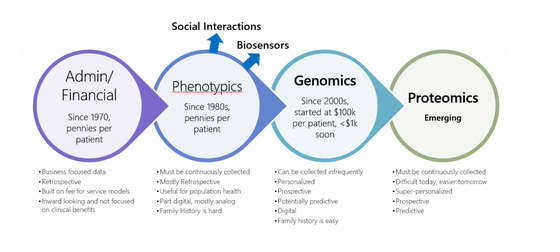The nice folks at Iron Mountain, a publicly traded storage and information management services company, reached out to me during the summer and asked what I think the challenges are around healthcare data management. They recorded my answers in a series of interviews published as part of National Health IT Week (Sep 16th-20th). Here’s the first of the series:
The nice folks at Iron Mountain, a publicly traded storage and information management services company, reached out to me during the summer and asked what I think the challenges are around healthcare data management. They recorded my answers in a series of interviews published as part of National Health IT Week (Sep 16th-20th). Here’s the first of the series:
Many of you probably already know Iron Mountain as a records management, data backup and recovery, document management, and secure shredding company because they’ve been doing that kind of work for years across many different industries. What you probably don’t know, and I certainly didn’t, is the extent to which they solve some pretty thorny problems of information lifecycle management (ILM) for healthcare. I wanted to thank Iron Mountain for conducting the interviews and for being willing to share this educational series with their customers and the broader Internet at large.
My main point in this introductory segment is something most of us already understand: that data is important. For now data is being used in healthcare predominantly for retrospective administrative and financial use. Of course many institutions that have EHRs are also starting to accumulate a lot of structured data for clinical use (e.g. meaningful use) but even that data is more for retrospective documentation as opposed to prospective or predictive care management. The diagram below starts to talk about how the broader data picture looks in healthcare today.
